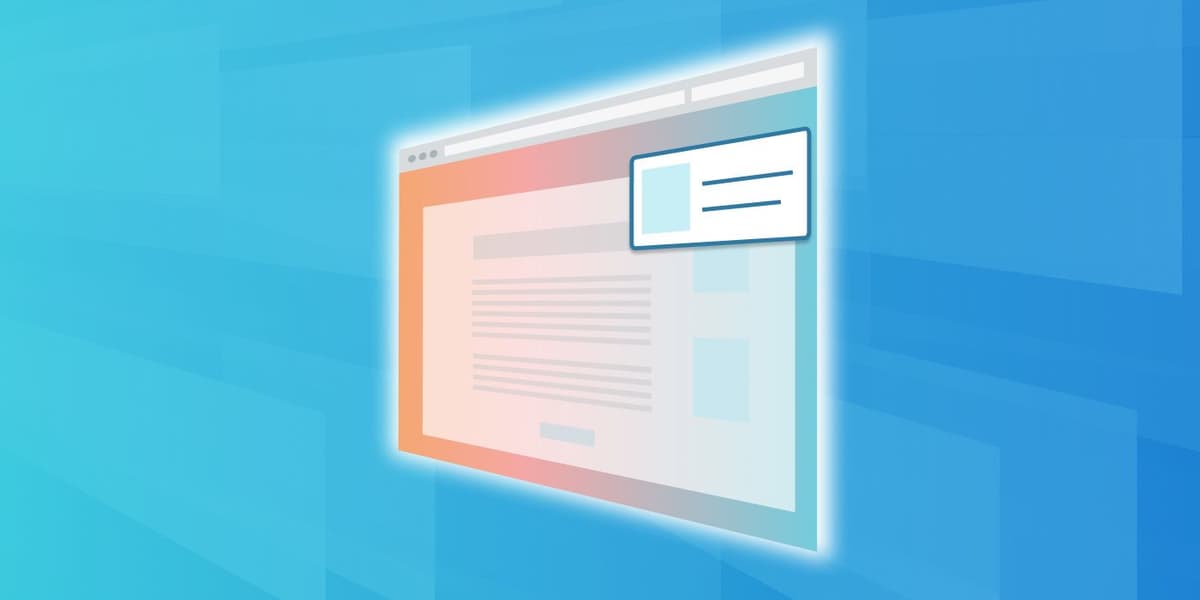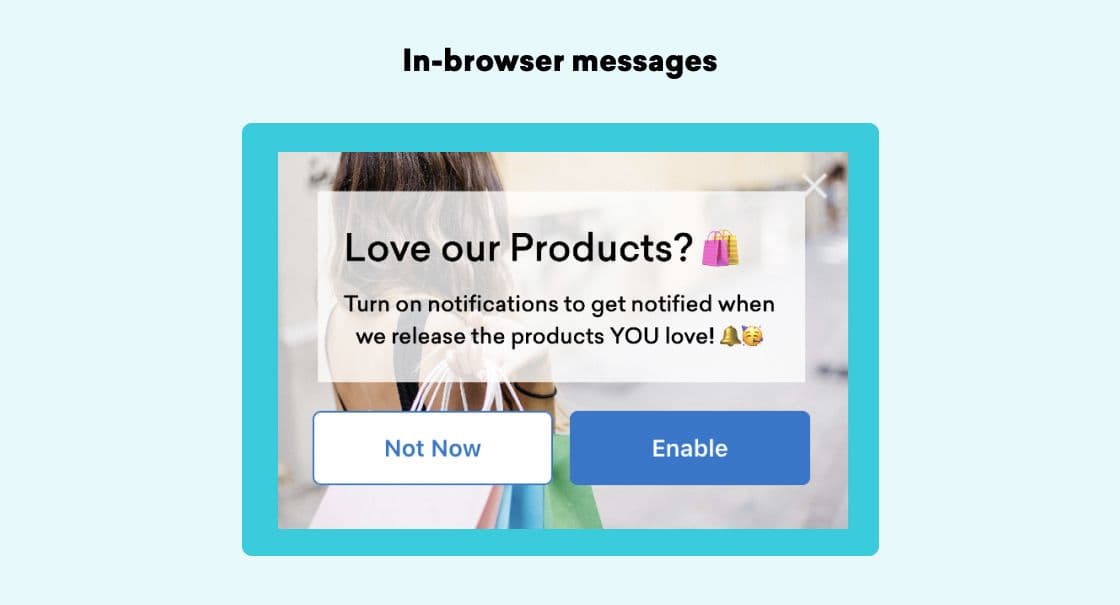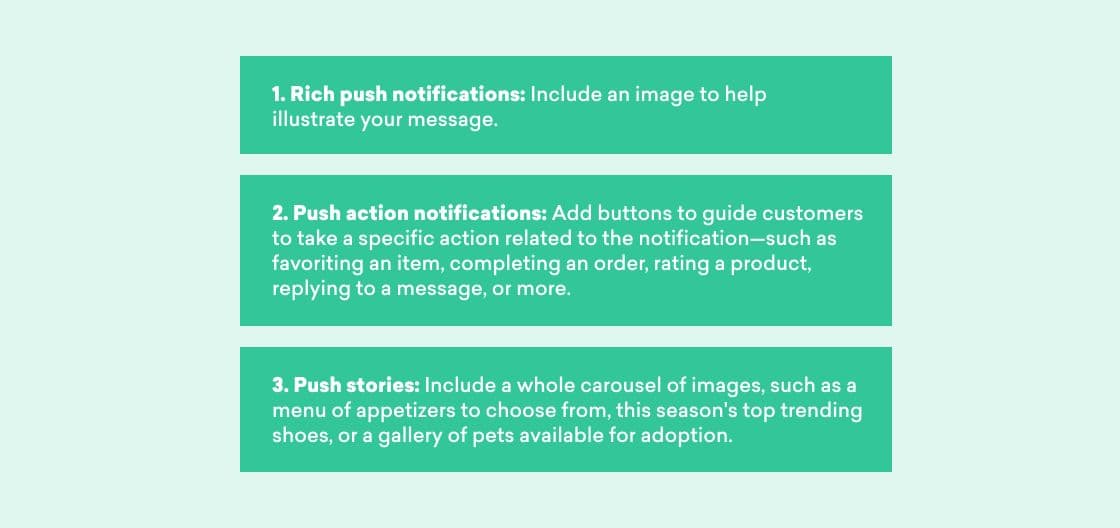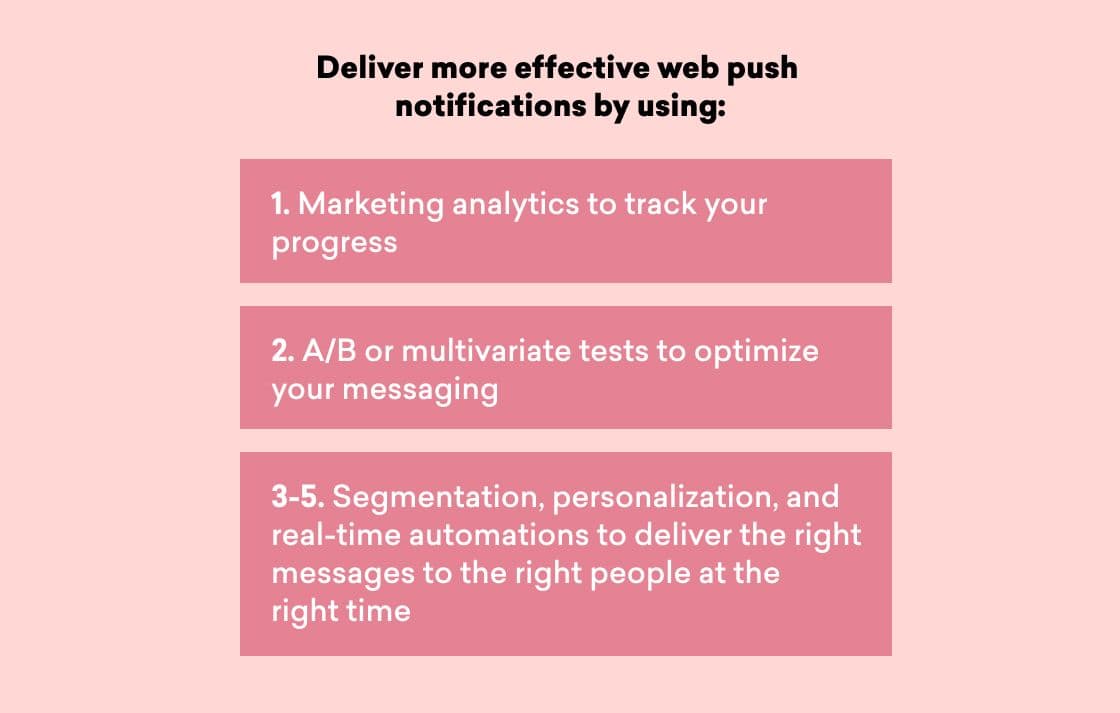Crawl, Walk, Run: Adding Web Push to Your Cross-Channel Strategy
Published on December 18, 2020/Last edited on December 18, 2020/4 min read


Mary Kearl
WriterA reminder pops up that your next video call is about to start. The dating website you recently joined just sent you new matches. Someone commented on the video you shared earlier today. Oh look, your favorite show has a new episode. Did you see that stock market alert that just flashed across your screen? Oh, good—your grocery delivery is about to arrive.
Mobile push notifications may generate more buzz, but their close relatives—web push notifications (think "push notifications, but for the web")—have become so seamlessly integrated into our daily routines that it's easy to forget they've only been around since 2015. Just like mobile push notifications, these messages are built for short, urgent communications and help draw customers back to re-engage with your brand. That's because web push notifications get delivered to web visitors, even when they’re not viewing your website.
But before launching this type of web messaging and adding it to your cross-channel marketing strategy, first start by crawling, then progress to walking, and finally advance to running. Here's how.
CRAWL: Prime Users to Opt Into Web Push, and Build up Your Subscriber List

As with mobile push notifications, users must opt in before receiving web push notifications. A lot of brands ask their customers to opt in to receiving push notifications by triggering a generic opt-in request the first time customers open their app or visit their website. While that approach may work for some, it may be an annoyance to others—and cause them to bounce from your website instead of continuing to browse.
That's why it's recommended to delay asking customers to opt into web push notifications until a need arises that push notifications can help address. And when that's the case, it's important to be sure to clearly state the value—such as to receive updates about an order they've just placed, travel arrangements they've booked, a cause they've just supported, or show they've just favorited. Even better: Give customers the option to opt in or not, while leaving room for the possibility to opt in in the future, with an option like "Not Now."
It takes work to gather opt-ins, and not everyone will want to receive updates on an ongoing basis, but brands like Anthropologie have developed healthy list sizes of over 800,000 web push notification subscribers.
WALK: Explore Your Different Web Push Notification Options
As customers opt in, you can start deploying timely messages about new promotions, breaking news, and product releases. In addition to plain-text web push notifications, you can pull out all the stops by sending more advanced web push notifications, including these three main types:

RUN: Enhance Your Campaigns Using Marketing Analytics, A/B or Multivariate Testing, Segmentation, Personalization, and Real-time Automations

Track your marketing analytics to see how your web push notifications are performing—keep an eye on open rates, click through rates, conversions, and time spent on site. Plus, with A/B and multivariate campaign testing, you can run experiments to see which message variants, image options, web push notification types, or button actions drive the greatest engagement.
By grouping like customers together into cohorts—aka segmentation—you can tailor your web push notifications to these groups based on their common behaviors or interests. For instance, pop culture junkies can receive entertainment-related breaking news updates, while science nerds will receive different alerts.
Personalization can help improve the effectiveness of your web push notifications, especially when you incorporate details that really matter—such as the recipient's location, preferred language, or updates related to their browsing or shopping habits.
Braze conducted an analysis of 534 billion messages sent between 2017 and 2019 and discovered that action-based and API-triggered web push notification campaigns deployed in the moment—aka using real-time automations—following a given customer action resulted in a 4.1x lift in open rates, compared to traditional, scheduled campaigns. The upshot? By leveraging customer engagement features that provide more timely, relevant messaging, brands can see stronger results from their web push notifications and do more to build a loyal, engaged web audience.
RUN A MARATHON: Incorporate Web Push Into a Larger Web Messaging Strategy
Ready to try running a marathon? Check out our Web Messaging: What It Is, How It Works, and Why It Matters guide, and advance your engagement by incorporating web push notifications alongside another key web messaging channel, in-browser messages, taking cues from brands like Anthropologie and NASCAR, who have leveraged web messaging to achieve double-digit growth among KPIs like open rates, app downloads, and conversions.
Related Tags
Be Absolutely Engaging.™
Sign up for regular updates from Braze.
Related Content
View the Blog
The new inbox reality: How iOS changes are reshaping email marketing

Aparna Prasad

Experience optimization: Turning data insights into better journeys

Team Braze

December 2025 Bonfire Marketer of the Month: Jagex’s Emma Oliver
